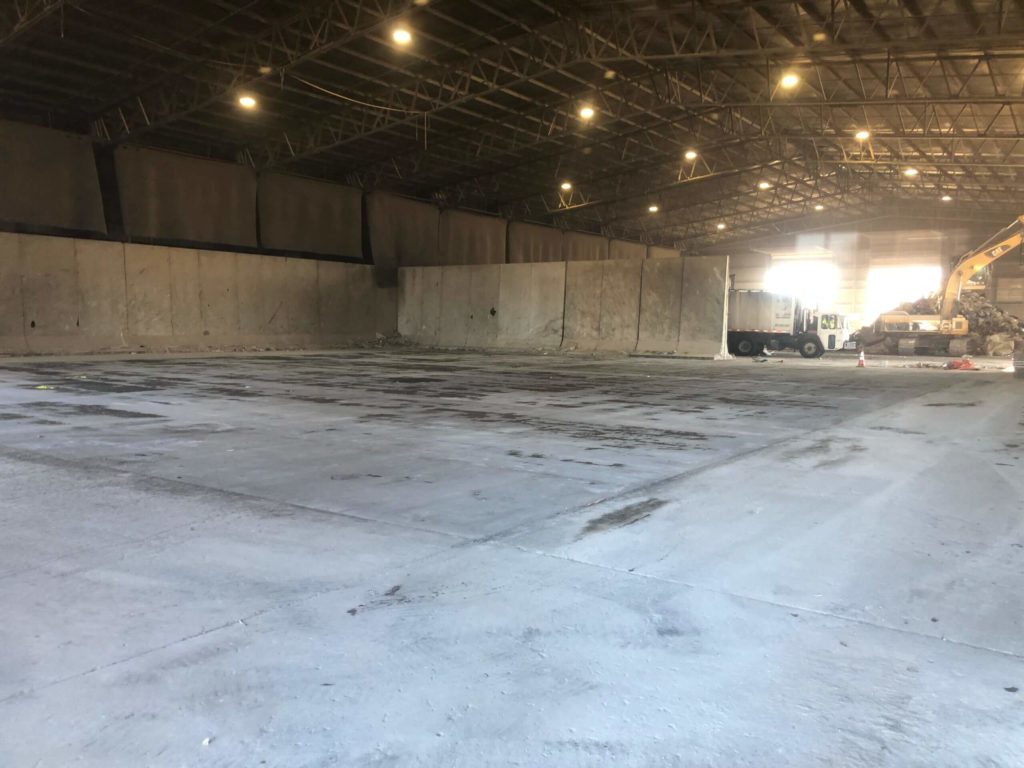
How Does Concrete Cure?
What makes concrete concrete is the curing process. The curing process is, at base, a process of hydration. Remember that. This is how concrete is cured at the construction site.
The curing process is when the material reaches its specific parameters for its application. So if you’ve got an outdoor loading dock and you want to put concrete down for truck traffic, that is going to have a specific parameter for performance. You design the mix for that use and then you need to give that mix the optimal conditions for proper curing so that it reaches those parameters.
Concrete strength depends on the growth of microscopic crystal-like structures within the concrete. The crystals are what bind the different aggregates together. It’s the “cement” part of the concrete. These crystals grow from hydration. When the Portland Cement hits water, the hydration begins. If there isn’t enough water, the crystals can’t grow and the concrete doesn’t develop the strength it should.
Concrete Curing – An Exothermic Reaction
Concrete curing, the hydration of the cement and the reaction between the cement and the water, is an exothermic reaction. Exothermic means it’s a reaction that gives off heat. This is very advantageous to pouring concrete in the cold. Depending on the mix and the additives, concrete starts generating its own heat right away.
The key for the best curing conditions in cold weather keeping the heat in so that the concrete remains at least 50 degrees while it cures.
Why is it so important to maintain proper curing temperature? Because if it gets too cold, the water in the cement will start to freeze and then the cement crystals don’t get hydrated enough and thus the concrete won’t cure properly. That’s bad news all around because if the concrete then dries out, you’ve got a lot of those cement crystals remaining dehydrated. The whole slab will have to be poured again.
We talk about this more in our blog on why concrete costs go up in winter, but suffice to say that the curing compounds in concrete need protection. And we provide that in the form of concrete blankets.
That’s why we put plastic sheets as insulation over the concrete to protect it. Our polystyrene insulation traps all that great exothermic heat in the concrete so that it stays warm enough to cure properly.
What is concrete Drying?
The drying of concrete is what happens when the water evaporates out of the material and the material becomes set.
Concrete is considered “dry” when you can add water without changing its composition. If you add water at any point before the concrete is dry, you chance the proportions of water, aggregate and cement. Once concrete dries, that means whatever properties it gained from the curing process are set.

Concrete Curing vs Drying?
The terms are used interchangeably, but they shouldn’t be, because they mean two different things.
In fact, they are opposite processes. Drying concrete is a process of dehydration where curing concrete is a process of hydration.
Concrete curing is the process by which the material develops to the full strength for its use. This process actually involves keeping the concrete within a range of relative humidity and temperature for proper development. So, if concrete is to cure properly, it has to stay at a specific humidity until it reaches the specific.
Customers usually ask about drying instead of curing, but the opposite should be the case.
You can have concrete that is perfectly dry, but that improperly cured, and thus you’re throwing your money away on a big project. Too much moisture loss too quickly is actually detrimental to proper concrete curing.
How long for concrete to cure?
The answer is that it depends on the mix you get. So always ask your concrete contractor, who should have asked the concrete supplier, how long the recommended curing time is.
Every commercial concrete supplier should have the testing capabilities on hand to tell you what the specifics are.
In general, remember the numbers 2, 7 and 28.
- Concrete cures 24-48 hours after setting to a strength where you can walk on it.
- Concrete cures 7 days after setting to a strength where you can drive some vehicle traffic over it.
- Concrete cures 28+ days after setting to its fullest strength.

